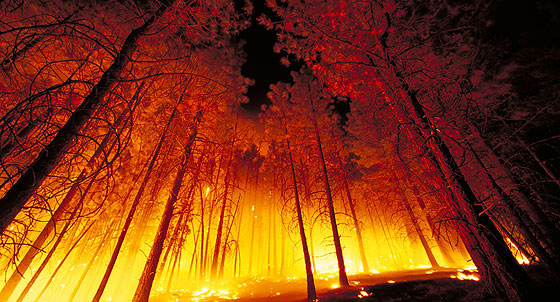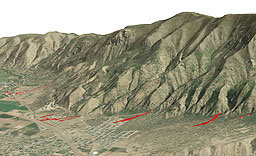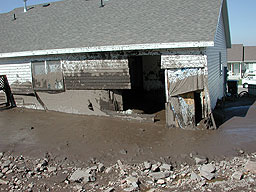
- A western wildfire
- National Interagency Fire Center, Boise, Idaho
Wildfire and Mudslide, Utah,
2001 and 2002
A wildfire burned for two weeks on Dry Mountain, south of Provo, Utah, in late August 2001. The “Mollie” fire consumed the vegetation on more than 8,000 acres.
After a fire, the soil surface repels water. Rapid runoff creates a risk of flash flooding and mudslides. The U.S. Forest Service seeded and mulched national forest lands, but it takes years for burned soil to recover. The Natural Resources Conservation Service offered to build diversion channels to protect houses from the hazard of mudflows, but emergency precautions were not taken.
Thunderstorm rainfall triggered mudslides down the west side of Dry Mountain on September 12, 2002. The people of Mollie have since taken defensive measures including digging diversion channels to direct mudflows away from houses until the mountainsides recover.


